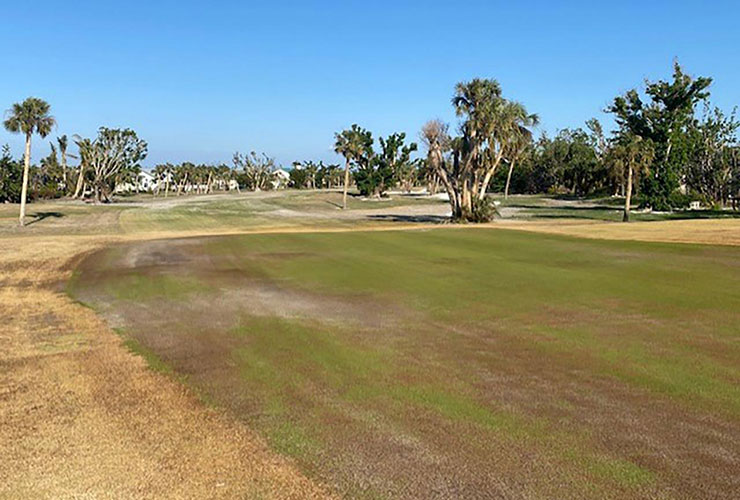Even the most meticulous of business plans can get blown away by 150mph winds. Sanibel Island Golf Club has a nearly 50-year history of serving seasonal members and tourists on this picturesque barrier island off the west coast of Florida, near Fort Myers. But in September, Hurricane Ian smashed Sanibel on its path of destruction across the state, sending water chest-high into the golf shop and completely submerging the course.
The storm wiped out the bridge connecting the island to the mainland and stripped the leaves from every non-palm tree. Course owner and general manager Drew Donnelly had to take a boat to the property after the storm and couldn’t figure out how to get to the golf shop because so much water was hiding the regular landmarks.
“We had just finished a 10-year plan to get the golf course in the best shape it has ever been in,” Donnelly says. “We had even gotten to the point where we had enough capital to close last May and June to re-do the greens. We were ready to kill it.”
Instead, the storm has virtually killed Donnelly’s business. A planned green fee of $170 after the renovation has turned into a happy-to-get-it $70. The tee sheet used to overflow with more than 200 golfers a day. Now, if 40 come, it’s “busy”. The course still doesn’t have power, and Donnelly has resorted to writing out member invoices on notepaper and texting them to property owners who have mostly relocated away from their winter homes on Sanibel until the island-wide damage gets repaired.
Club members continue to make payments even though they aren’t around to use the course because they know how important it is for it to survive.

It presents Donnelly and other Sanibel business owners with a conundrum many club owners and managers face when it comes to extending operating hours or investing in improvements. “The town wants businesses to open because we need to draw tourists back,” he said, “but a business wants to see people coming back to feel better about that investment.”
Donnelly spends his days in combat boots and grubby work clothes trying to keep his grass alive and doors open while navigating a blizzard of insurance paperwork and plucking the occasional golf-cart seat out of a barranca. “The storm sort of pushed all our carts into a pile,” he says. “We didn’t lose any of them, but every single cart seat got swept away. Those things are $370 a pop.”
The goal? Keep cleaning up and gradually emerge from the storm damage—getting the restaurant in the clubhouse back open is a priority—and stay afloat until the condo complexes and resorts on Sanibel come back online in late 2023 or 2024. “It’s long hours, but it’s always been that way. I’ve gone pretty much three years without a day off,” Donnelly says. “The hardest part is to drive back across the bridge to go home and get a few miles inland, where people have pretty much forgotten this ever happened. Then I come back and see this, and I almost can’t believe it. It’s like it’s a completely different place. I’ve been here 20 years, and it’s still disorienting.”
The separator for places that end up surviving these kinds of events is something that involves dollars and cents but transcends numbers on a financial document: Donnelly’s bank is working with him to structure loan payments to account for this massive disruption, and members are continuing to make payments even though they aren’t around to use it because they know how important it is for it to survive. “Without that, there’s no way it could work,” Donnelly says. “It’s been a group effort.”
The new greens? They still look great, even after missing a month of fertiliser and getting irritated by the Gulf of Mexico. “Come out and see us,” Donnelly says. “It’s still the dream to show off this place the way it was meant to be.”









